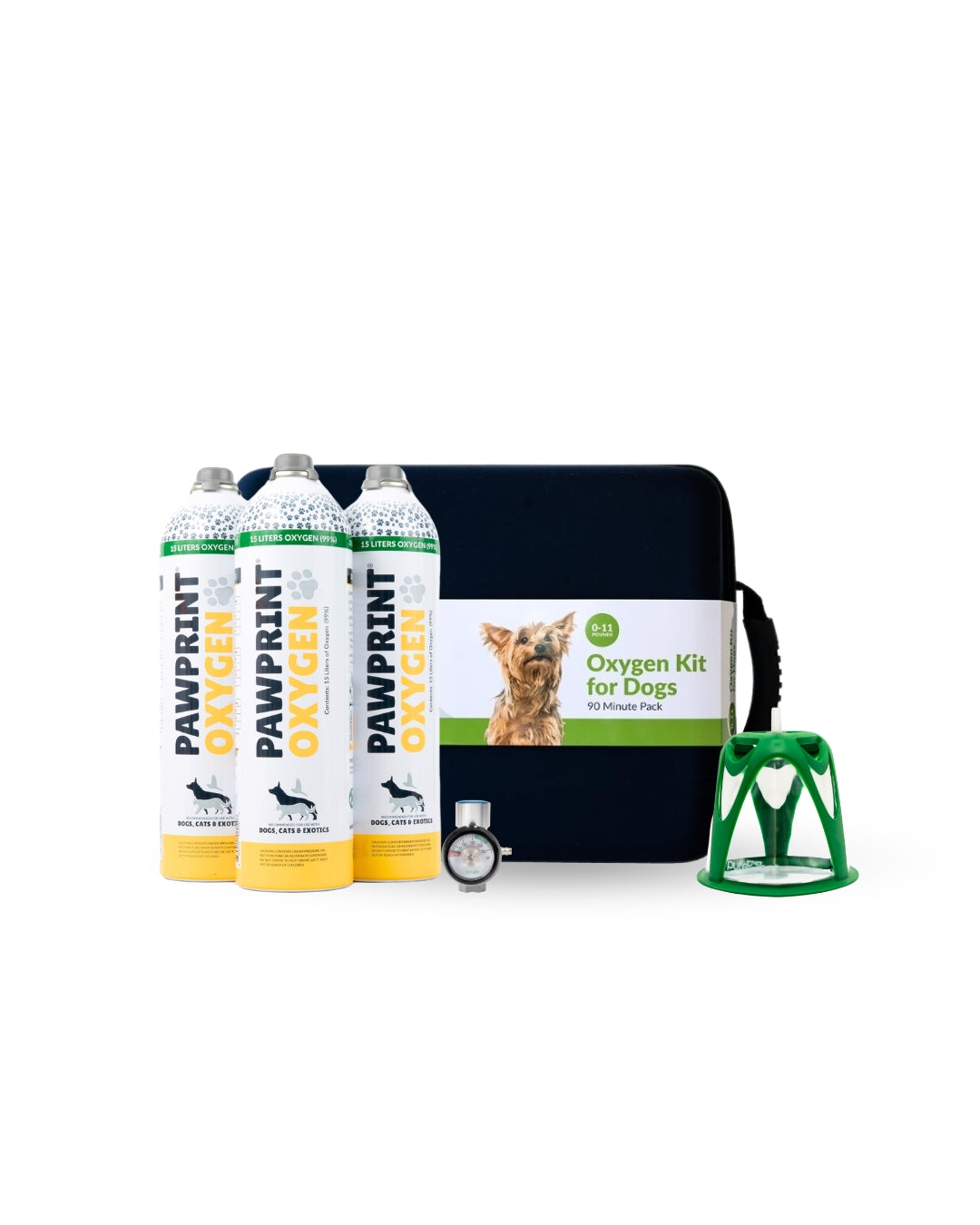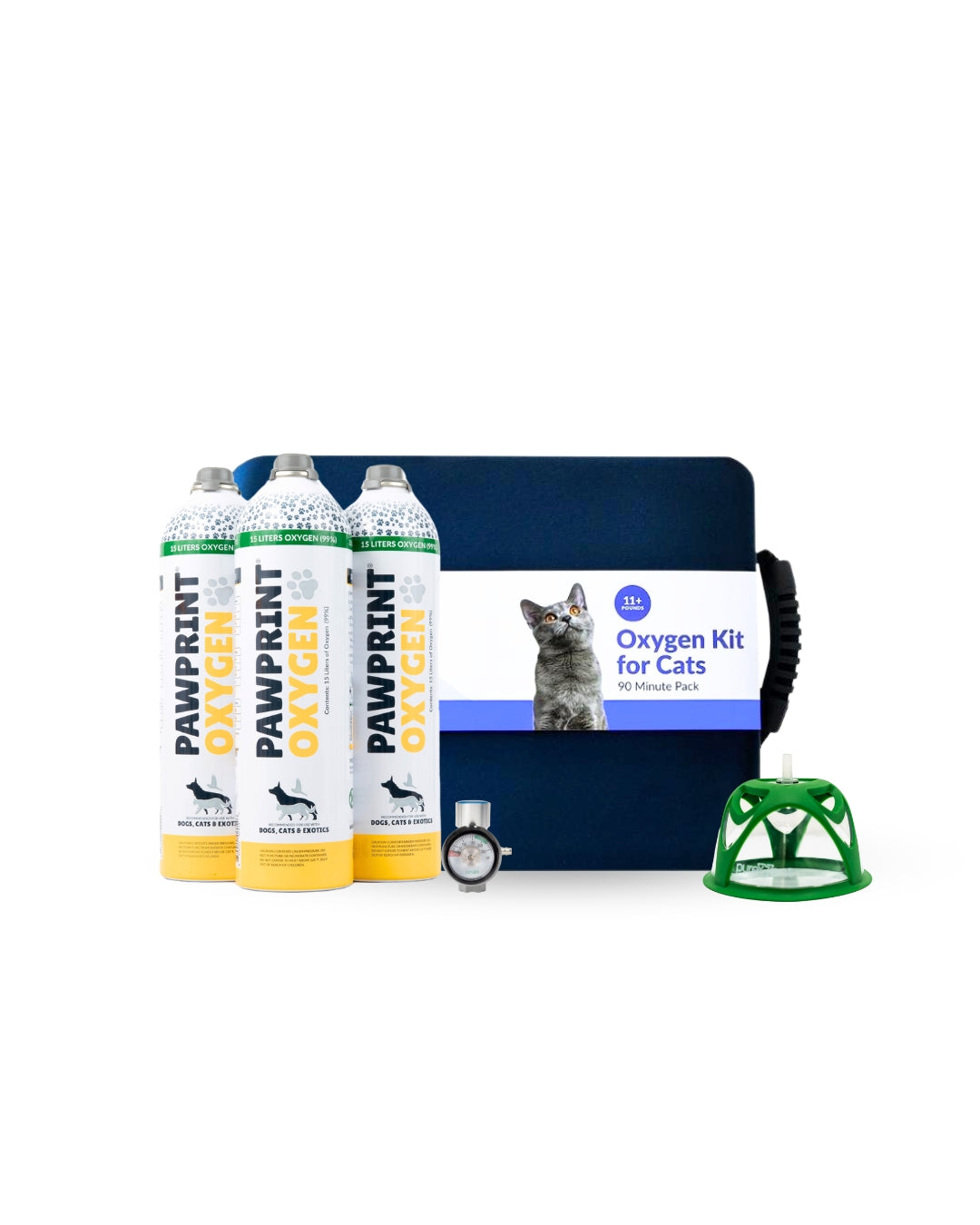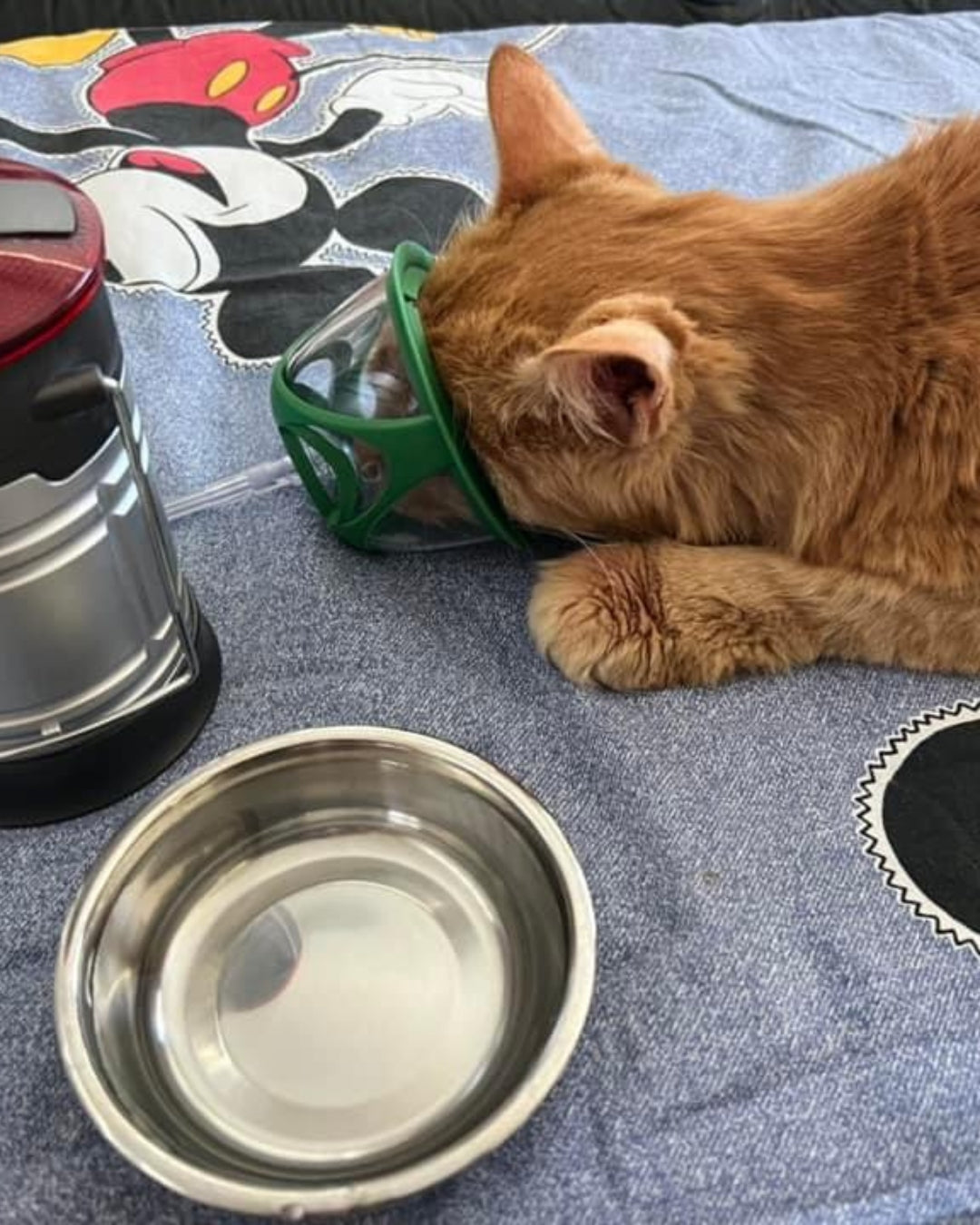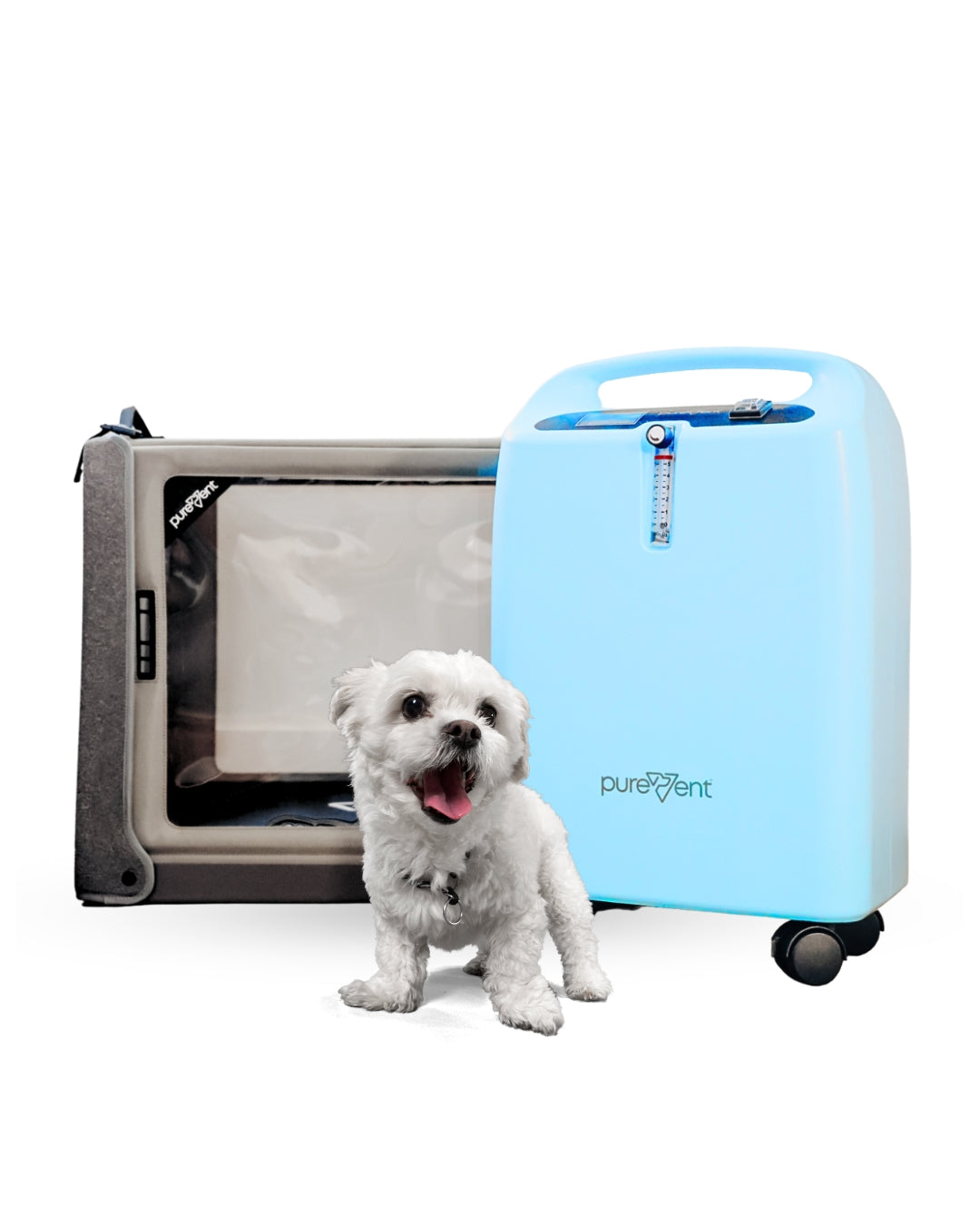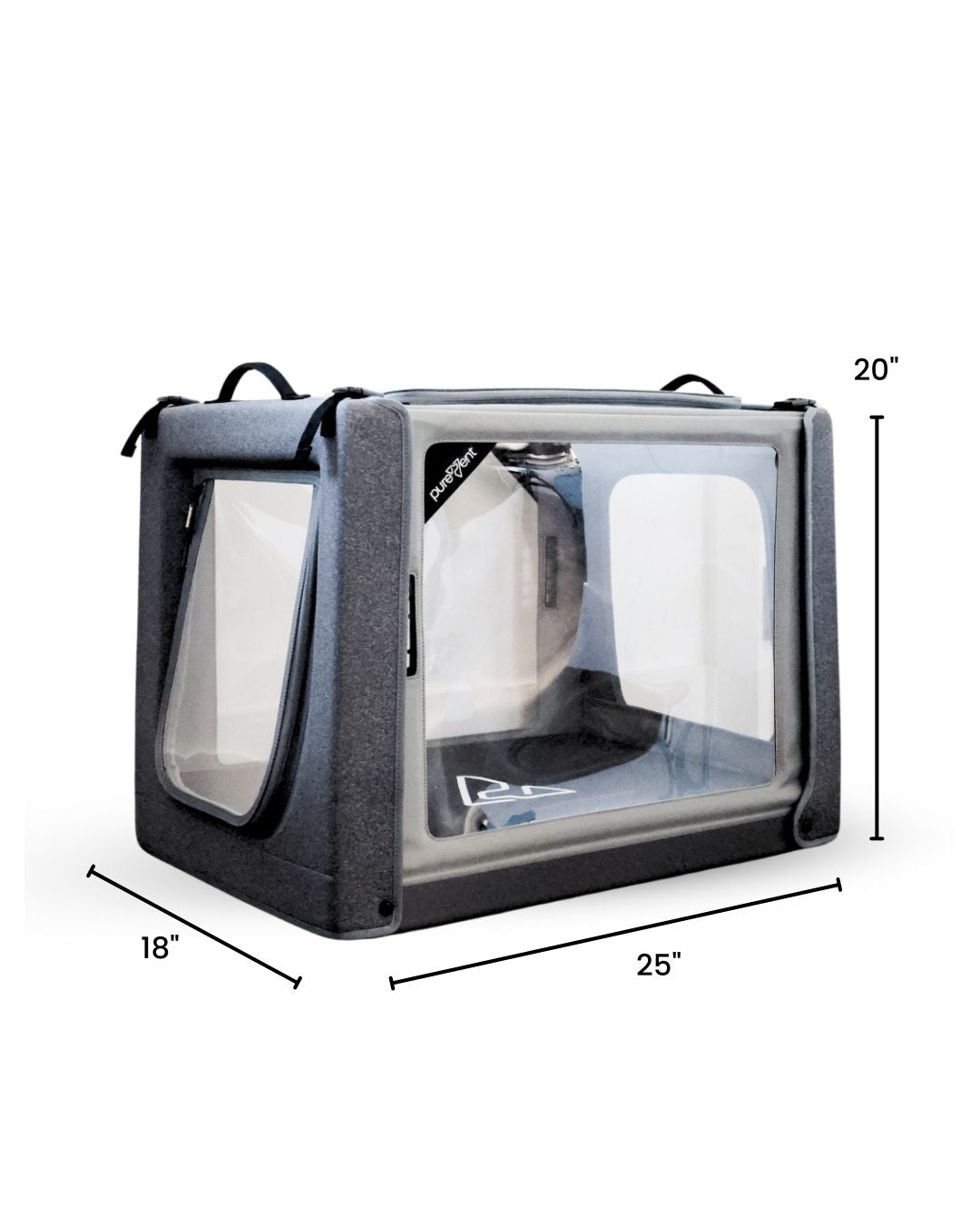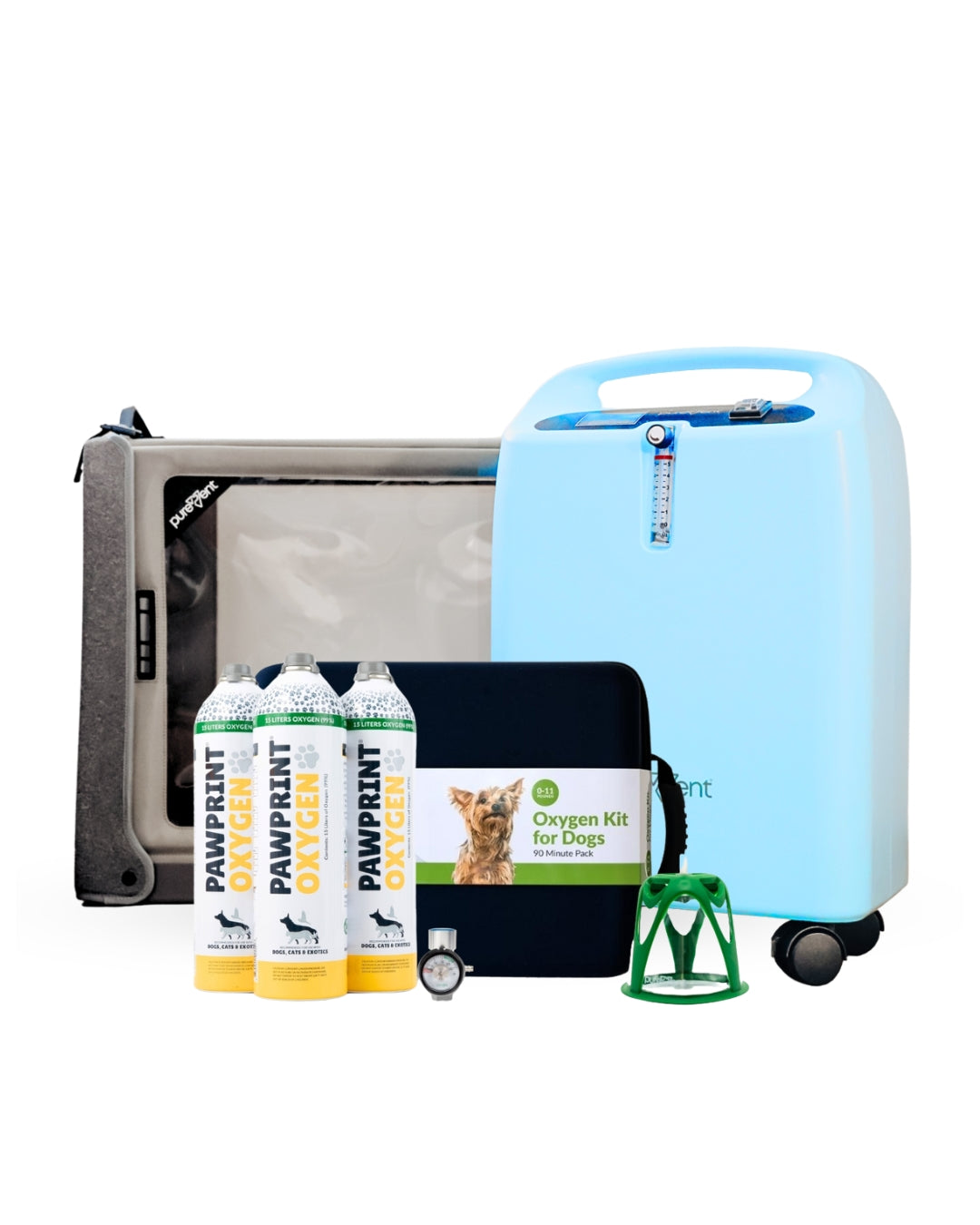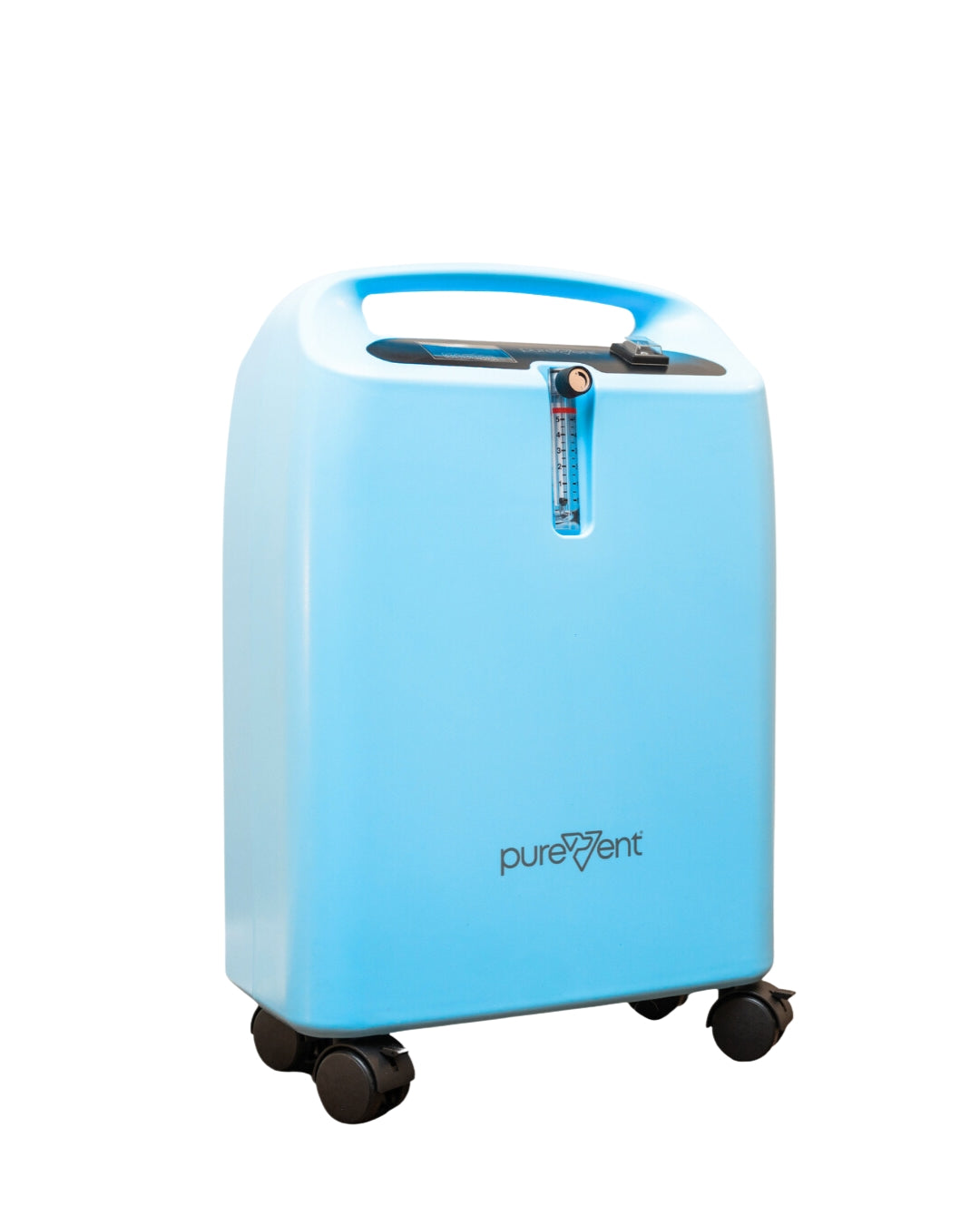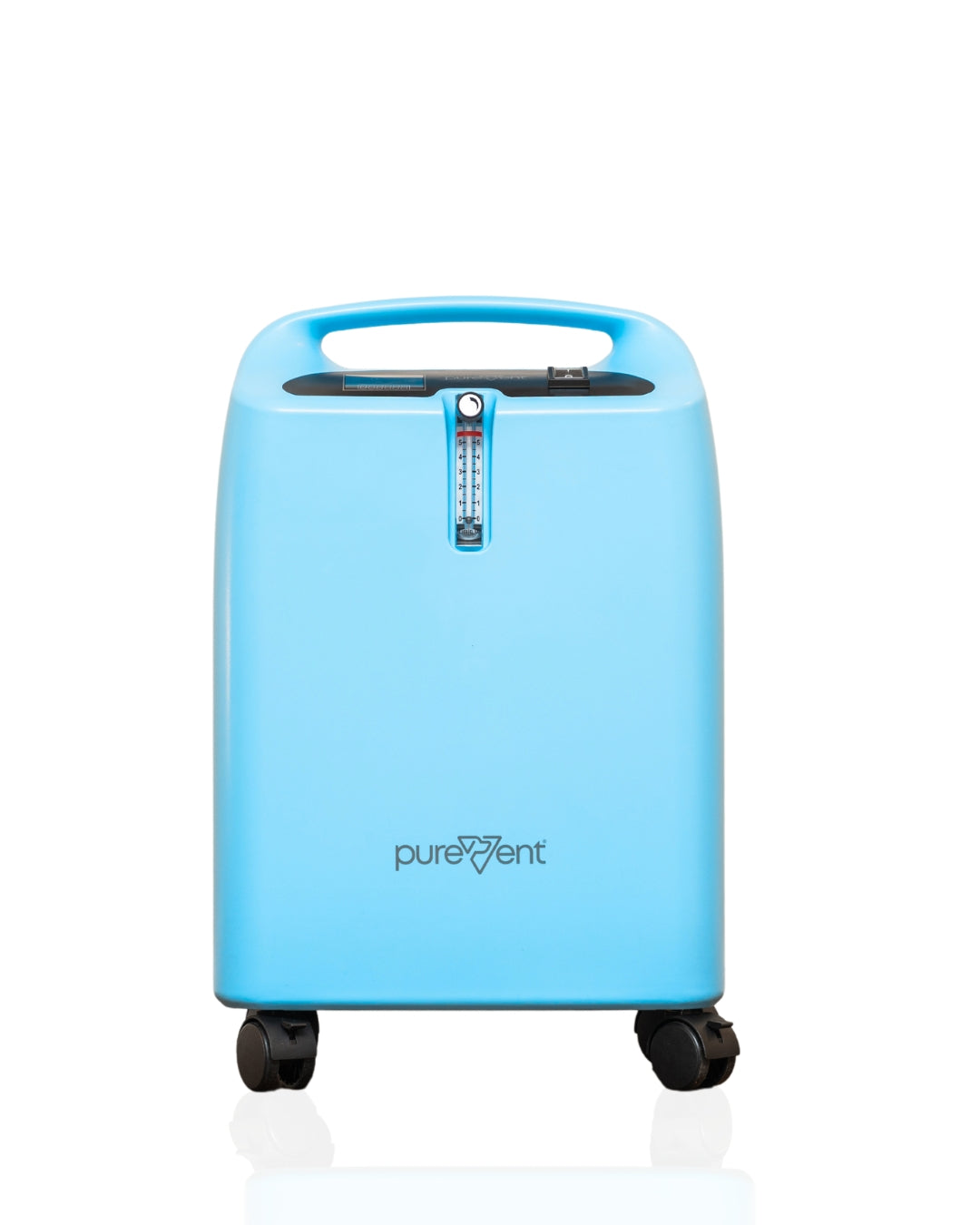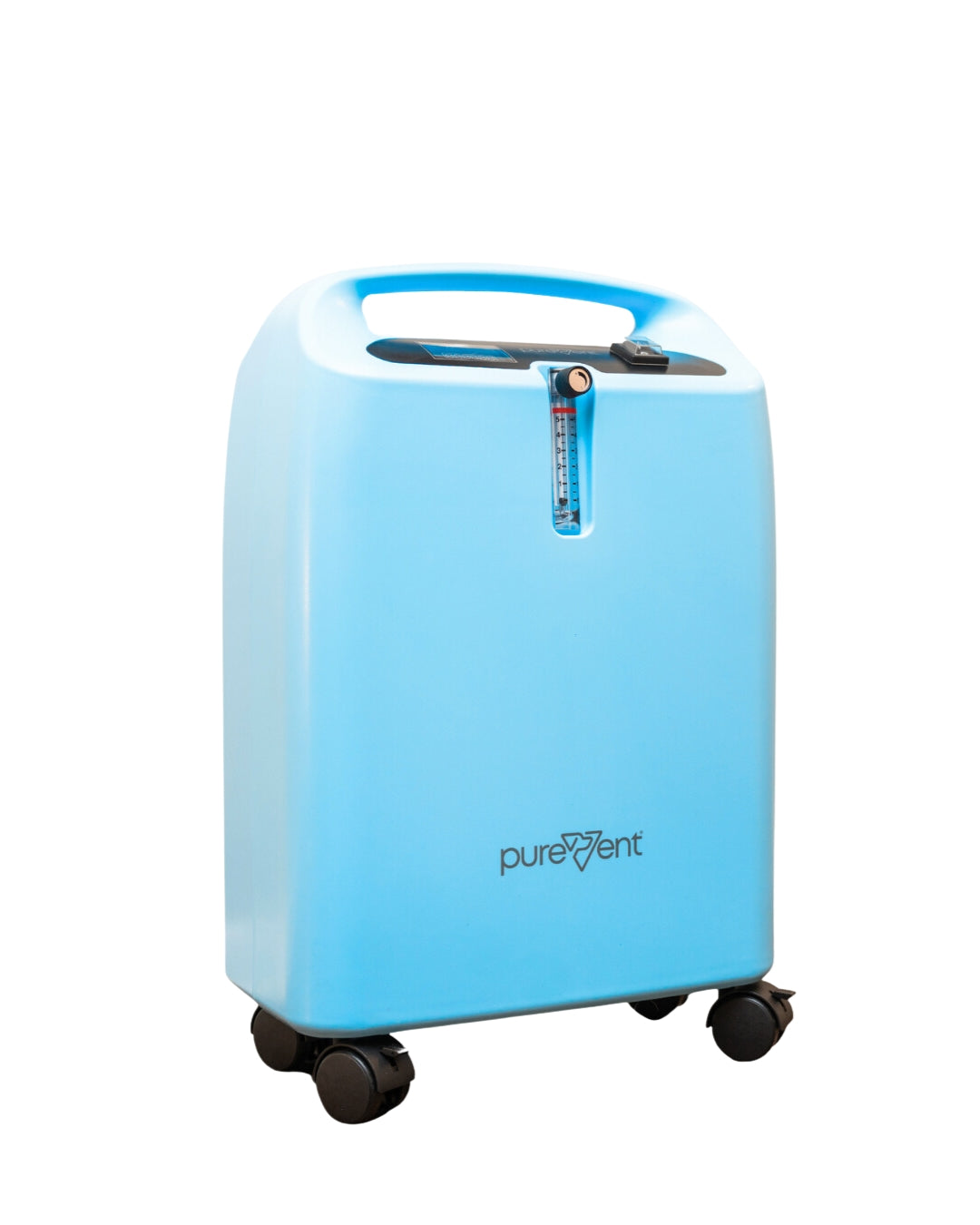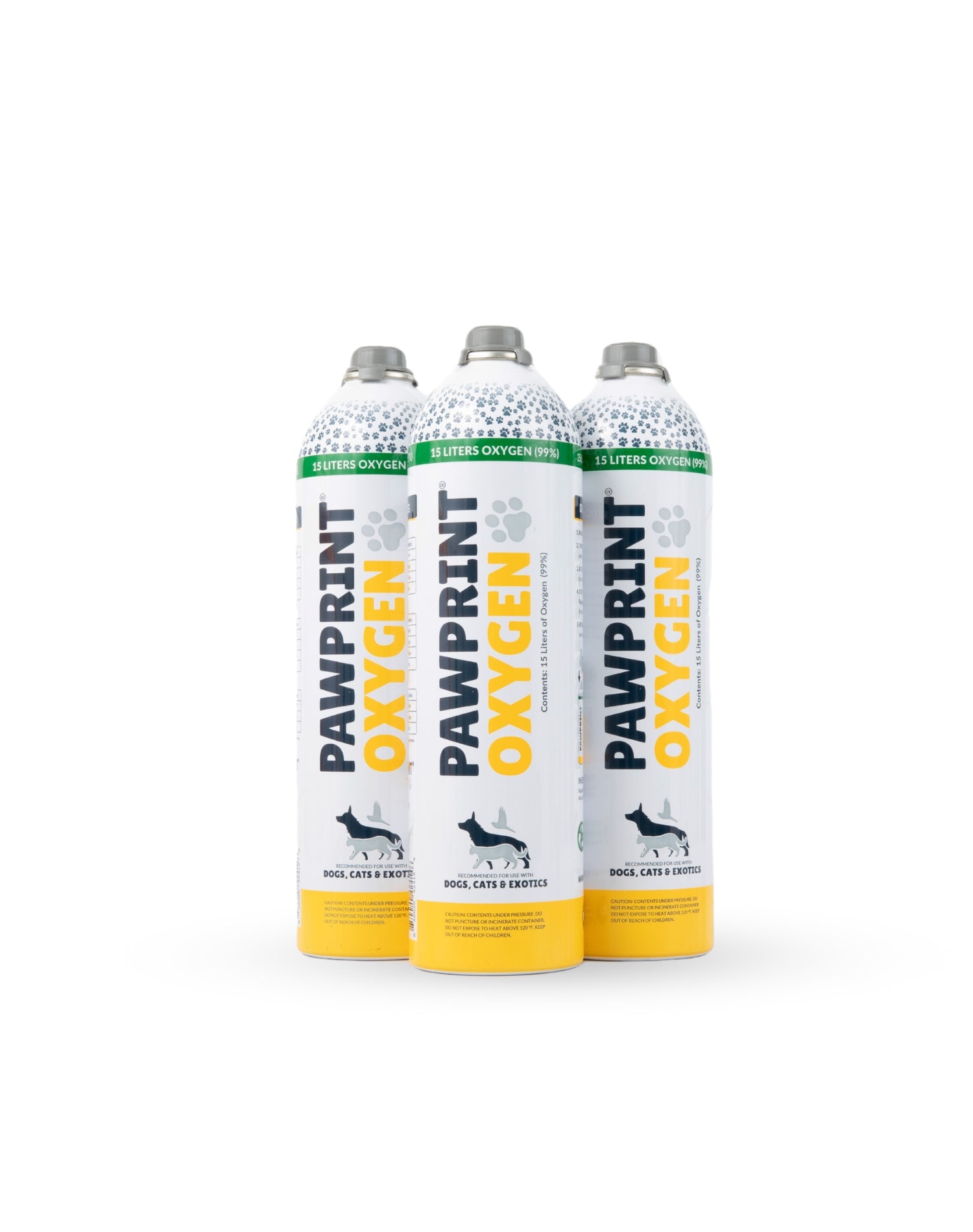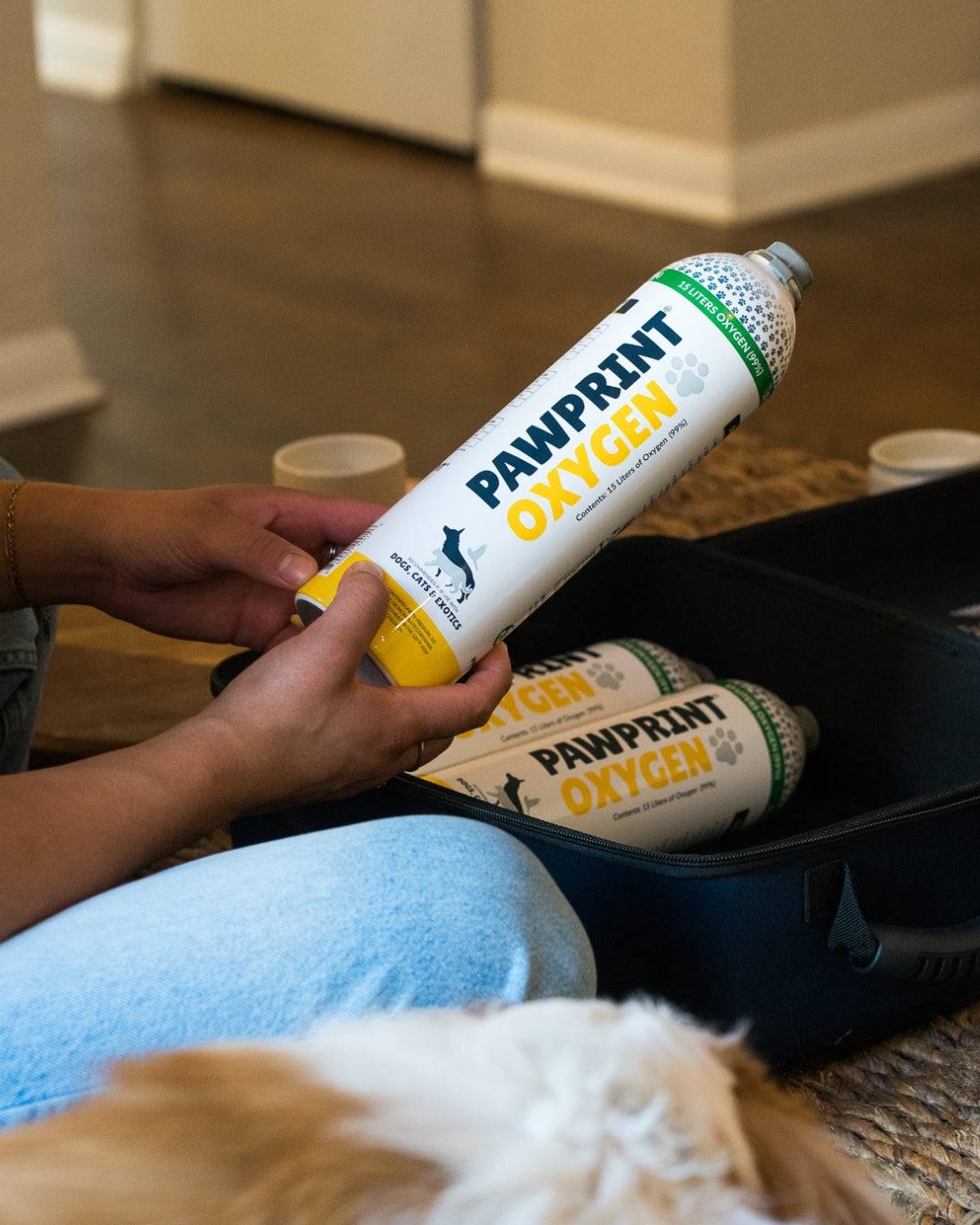As a pet owner, your furry friend relies on you for care, comfort, and protection. While regular vet visits and a healthy lifestyle are key to keeping your pet safe, emergencies can happen when you least expect them. Whether it’s a minor cut during playtime or a more serious injury, being prepared with a well-stocked first aid kit can make all the difference.
A pet first aid kit is not just a collection of supplies; it's an essential tool that enables you to provide immediate care when your pet needs it most. From stabilizing injuries to managing minor ailments, having the right items on hand can help you respond quickly and effectively, reducing the risk of complications and potentially saving your pet’s life. In this article, we’ll explore the must-have components of a pet first aid kit, including the importance of supplemental oxygen and specialized wound care products like HemoSeal Critical Pet Wound Spray. By the end, you’ll be well-equipped to create or enhance your own kit, ensuring you’re ready for whatever comes your way.
Table of content
Essential Components of a Pet First Aid Kit
When assembling a pet first aid kit, it's crucial to include supplies that will allow you to manage a variety of situations, from minor cuts to more significant injuries. Each item in your kit serves a specific purpose, ensuring that you're equipped to handle whatever comes your way.
Some common pet first aid items to include are:
- Gauze and Bandages : Cover wounds, control bleeding. Keep various sizes.
- Adhesive Tape : Secure bandages, especially on paws or tails. Use pet-safe tape.
- Antiseptic Solution : Clean wounds to prevent infection. Choose pet-safe products.
- Digital Thermometer : Monitor for fever or hypothermia. Normal range: 100°F-102.5°F .
- Tweezers and Scissors : Remove foreign objects, trim fur around wounds.
- Disposable Gloves : Maintain hygiene during care.
- Saline Solution : Flush wounds and rinse eyes.
- Pet-Safe Antihistamine : Manage allergic reactions. Consult vet for dosage.
These essential components form the foundation of your pet’s first aid kit, enabling you to address a range of common injuries and health issues. By being prepared with these items, you can provide effective first aid to your pet, helping to stabilize their condition until you can reach a veterinarian for further care.

Personalizing Your Pet’s First Aid Kit
While a basic first aid kit is crucial for handling common emergencies, personalizing it to meet your pet’s unique needs ensures that you’re fully prepared for any situation that might arise. Every pet is different, and their first aid kit should reflect their specific health requirements, breed characteristics, and lifestyle.
Consider Your Pet’s Specific Needs
-
Include Essential Medications :
Pack a supply of your pet's long-term medications (e.g., insulin, heart medication) in your first aid kit. Store properly to maintain efficacy. -
Tailor Supplies to Your Pet :
Adjust kit contents based on your pet's size, breed, and health history. For example, include larger bandages for big dogs or asthma inhalers and a portable oxygen kit for pets with respiratory issues.
Regular Updates and Checks
-
Regular Kit Maintenance :
Check your pet's first aid kit every few months. Ensure all items are present, undamaged, and within expiration dates. Replace expired medications and replenish used supplies promptly. -
Keep It Stocked :
After using items from the kit, restock immediately. A fully stocked kit ensures you're always prepared for pet emergencies.
By personalizing and maintaining your pet's first aid kit, you're prioritizing their safety. Regular updates mean you'll have everything needed in an emergency, providing peace of mind and the best care for your pet.
Why You Should Add Supplemental Oxygen To Your Pet's First Aid Kit
In certain emergency situations, providing supplemental oxygen can be a critical step in stabilizing your pet’s condition until they can receive professional veterinary care. Including supplemental oxygen in your pet’s first aid kit is particularly important if your pet is at risk for respiratory issues or other conditions that can compromise their ability to breathe effectively.
Why Include Supplemental Oxygen In Your Pet's First Aid Kit
Vital for Respiratory Issues :
Pets with certain pre-existing conditions, such as asthma, chronic bronchitis, or pulmonary hypertension can greatly benefit from having supplemental oxygen available. In these cases, oxygen can help ease breathing difficulties and prevent the condition from worsening during a flare-up.
Emergencies like Smoke Inhalation :
In the unfortunate event of a fire or exposure to smoke, supplemental oxygen can be lifesaving. Smoke inhalation can cause severe respiratory distress, and immediate access to oxygen can help your pet breathe more easily and reduce the risk of long-term damage.
Conditions Such as Congestive Heart Failure :
For pets diagnosed with congestive heart failure or similar heart conditions, oxygen therapy can help manage episodes of acute respiratory distress by improving oxygen levels in the blood. This can be especially critical during sudden heart failure crises when your pet may struggle to breathe.
Dog Oxygen Rescue Kit
Our Oxygen Rescue Kits are designed to help your dog exactly when they need it. You can administer on-the-spot oxygen or oxygen in transport while on your way to emergency care. Dogs needing this rescue kit would likely suffer from more acute health conditions like seizures or be in a high-risk category that you'd like to keep a kit on hand to transport them with.
Rescue Oxygen Products To Add To Your Pet's First Aid Kit
Pawprint Oxygen’s Portable Pet Oxygen Kit:
One of the most convenient and effective options for providing supplemental oxygen to pets is the Pawprint Oxygen portable pet oxygen kit. This kit is designed to be easy to use and does not require a prescription, making it accessible for all pet owners. It includes lightweight, portable oxygen canisters, a pre-set flow regulator, a pet-friendly mask, and clear instructions for administration. The kit is ideal for home use or for taking on the go, ensuring that you’re prepared to help your pet in any situation.
When and How to Administer Oxygen To Your Pet During An Emergency
Guidelines for Administering Oxygen Safely:
If your pet is having trouble breathing, remain calm and assess the situation. Place the oxygen mask securely over your pet’s nose and mouth, ensuring a comfortable fit to deliver the oxygen effectively. Start the flow of oxygen by placing the regulator on top of the canister and twisting clockwise. Monitor your pet closely during treatment and look for signs of improvement, such as more regular breathing or reduced panting. If your pet continues to show signs of distress, it’s important to keep the oxygen flowing until you can get your pet to a veterinarian for further evaluation and treatment.
Consulting with Your Veterinarian:
While having supplemental oxygen on hand is incredibly useful, it’s essential to consult with your veterinarian before using it for the first time. Your vet can provide guidance on the proper use based on your pet’s health history. Additionally, they can advise you on when it’s appropriate to use oxygen and when immediate veterinary care is necessary.
Including supplemental oxygen in your pet’s first aid kit equips you with a powerful tool for managing respiratory emergencies. Whether your pet has a chronic condition, or you simply want to be prepared for unexpected situations, having this resource on hand can make a significant difference in your pet’s health outcomes during a crisis.
Adding HemoSeal Critical Pet Wound Spray Into Your Pet's First Aid Kit
HemoSeal Critical Pet Wound Spray is a valuable addition to any pet first aid kit, designed to help manage bleeding quickly and effectively in a variety of situations. Whether your pet has a minor cut or a more serious wound, HemoSeal can be an essential tool in your first aid arsenal, providing immediate care to stabilize your pet until you can reach a veterinarian.
What Is HemoSeal Critical Pet Wound Spray?
HemoSeal is a specially formulated spray designed for rapid wound care in pets. It’s particularly effective at controlling bleeding from cuts, scrapes, and puncture wounds. The spray contains agents that promote quick clotting, helping to seal wounds and prevent excessive blood loss. This makes it a critical resource not only for minor injuries but also for more serious wounds where immediate bleeding control is necessary.
When to Use HemoSeal Critical Pet Wound Spray
Effective in Controlling Bleeding:
HemoSeal is most used for injuries that result in bleeding, such as cuts, scrapes, or puncture wounds. If your pet gets a deep scratch from rough play, steps on something sharp, or sustains a minor injury during an outdoor adventure, HemoSeal can help stop the bleeding quickly, reducing the risk of infection and further complications.
Invaluable in Critical Situations:
In more severe cases, such as a deep wound or significant bleeding, HemoSeal can provide critical care before you’re able to reach a veterinarian. By controlling the bleeding and protecting the wound, it helps stabilize your pet, giving you time to seek professional medical attention. This makes HemoSeal an indispensable part of your first aid kit, especially in emergencies where every second counts.
How to Apply HemoSeal Critical Pet Wound Spray
Step-by-Step Instructions for Applying HemoSeal:
-
Calm Your Pet : Before you begin, make sure your pet is calm and secure. If they are in pain or distressed, consider using a muzzle or having someone assist you to prevent accidental bites.
-
Clean the Wound Area : If possible, gently clean the wound with saline solution or clean water to remove any dirt or debris. Avoid using harsh chemicals or alcohol, as these can cause further irritation.
- Apply HemoSeal : Shake the HemoSeal spray bottle well. Hold it a few inches away from the wound and spray directly onto the bleeding area. Ensure the spray covers the entire wound surface.
-
Allow Time for Clotting : After applying the spray, allow it to sit on the wound for a few minutes. HemoSeal works quickly, so you should see the bleeding slow down or stop entirely within a short time.
-
Cover the Wound (if necessary) : Depending on the location and severity of the wound, you may want to cover it with a sterile gauze pad and secure it with adhesive tape to protect it from further injury.
- Monitor Your Pet : After applying HemoSeal, monitor your pet closely for any signs of continued bleeding or distress. If the wound is severe, or if the bleeding does not stop, seek veterinary care immediately.
HemoSeal Critical Pet Wound Spray is an essential tool for managing both minor and major wounds in pets. Its quick action in stopping bleeding can be lifesaving, giving you the ability to provide effective first aid until professional help is available. Including HemoSeal in your pet’s first aid kit ensures that you’re prepared for any situation, allowing you to act swiftly and confidently in an emergency.
Other Medications and Emergency Care Items To Keep In Your Pet's First Aid Kit
In addition to wound care supplies, medications, and supplemental oxygen, your pet’s first aid kit should include a range of emergency care items that address a variety of health concerns. These items are essential for managing symptoms, treating minor injuries, and providing temporary relief until you can reach a veterinarian.
Hydrogen Peroxide (3%)
- Cleaning Wounds : Hydrogen peroxide is a versatile antiseptic for cleaning minor cuts and scrapes. It releases oxygen when applied to wounds, helping remove dirt and debris while killing bacteria, thus preventing infection.
- Inducing Vomiting : In certain poisoning cases, hydrogen peroxide can induce vomiting. However, only use it under veterinary guidance. If your pet ingests something toxic, contact your vet or pet poison control immediately for advice and proper dosage instructions.
Activated Charcoal
- Absorbing Toxins : Activated charcoal is crucial for poisoning emergencies. It binds to toxins in the gastrointestinal tract, preventing their absorption into the bloodstream. While potentially lifesaving, only administer it under veterinary guidance to avoid complications.
- When to Use : Use activated charcoal only if recommended by your vet or pet poison control. It's particularly effective for poisoning from medications, pesticides, or household chemicals. Always follow professional instructions carefully.
Styptic Powder
- Stopping Minor Bleeding : Styptic powder quickly stops bleeding from minor cuts or overly short nail trims. It works by constricting blood vessels and promoting clotting. Apply a small amount directly to the bleeding area and apply gentle pressure until the bleeding stops.
- Nail Care : For pet owners who trim their pet's nails at home, styptic powder is essential. It can instantly stop bleeding if you accidentally cut a nail too short.
Sterile Eye Dropper/Syringe
- Administering Medications : A sterile eye dropper or syringe is vital for giving liquid medications to your pet. It ensures clean, precise dosage delivery for both oral medications and eye drops.
- Rinsing Wounds : Use a needle-free syringe to flush wounds with saline solution. This helps clean the area and remove debris before applying antiseptics or bandages.
Splint Material
- Temporary Stabilization of Broken Limbs : Splint material provides temporary support for broken bones or severe sprains until you can reach a veterinarian. It prevents further injury and reduces pain by immobilizing the affected limb. Use simple materials like padded sticks or specialized veterinary splints, secured with bandages or fur-safe tape.
- Application Tips : Gently apply the splint to support the joint above and below the injury. Secure it with bandages, but avoid wrapping too tightly to prevent restricted blood flow.
Calming Aids
- Reducing Stress During Emergencies : Calming aids help soothe your pet during stressful situations, making it easier to administer first aid. Options include pheromone sprays or natural supplements like chamomile or valerian root. These are especially useful for pets prone to anxiety in unfamiliar situations.
- How to Use : Apply calming sprays to your pet's bedding or surrounding area. Administer calming supplements as directed by your vet. Remember, these aids support first aid efforts but don't replace proper medical care.
Including these medications and emergency care items in your pet’s first aid kit ensures that you’re prepared to handle a wide range of situations. Whether it’s a minor injury, a poisoning incident, or a broken limb, having these tools at your disposal can help you provide effective care and potentially save your pet’s life in an emergency.

Emergency Transport and Safety Tools To Include In Your Pet's First Aid Kit
In an emergency, ensuring your pet’s safety during transport to a veterinary clinic is just as important as the first aid you provide. Having the right tools on hand can help you manage your pet’s behavior, keep them secure, and get them the help they need as quickly as possible.
Pet Muzzle
- Why It's Important : Gentle pets may bite when stressed or in pain. A muzzle prevents bites during first aid or transport to the vet, ensuring safety for both pet and owner.
- Using a Muzzle Safely : Choose a comfortable, breathable muzzle that allows panting. Use for short periods only and never leave your pet unattended while muzzled.
Emergency Contact Information
- Why You Need It : Quick access to emergency contacts saves crucial time. Include your vet's number, nearest emergency clinic, and animal poison control hotline in your pet's first aid kit.
- How to Organize : Store contacts in a waterproof, accessible spot in your kit. Keep a digital copy on your phone for convenience. Easy access helps maintain calm during emergencies.
Pet Carrier and Blanket
- Safe Transport to the Vet : A sturdy pet carrier is crucial for emergency transport. It provides security, reduces anxiety, and prevents further injury. Choose a carrier that allows your pet to lie down comfortably without excess space.
- Using a Blanket : A blanket offers warmth, security, and comfort. Drape it over the carrier or use it as a makeshift stretcher. A familiar blanket can soothe your pet during stressful vet trips.
These emergency transport and safety tools are critical for ensuring that your pet stays safe and secure while being transported to further care. By including a muzzle, emergency contact information, and a reliable pet carrier with a blanket in your first aid kit, you’ll be well-prepared to handle any situation that requires a quick and safe trip to the vet.
Tips for Using Your Pet's First Aid Kit
Having a well-stocked first aid kit is essential, but knowing how and when to use it is equally important. In this section, we’ll cover best practices for using your pet’s first aid kit effectively and making informed decisions during emergencies.
Knowing When to Use First Aid vs. Seeking Veterinary Care
-
At-Home First Aid : Many minor injuries or ailments can be managed at home using the items in your first aid kit. Small cuts, minor scrapes, insect stings, and superficial wounds can often be treated with proper wound care, antiseptics, and bandages. Similarly, minor allergic reactions or mild eye irritation may be managed with the appropriate over-the-counter medications or treatments. Your first aid kit is designed to stabilize and provide relief in these situations.
- When to Go to the Vet : However, there are times when your pet requires immediate veterinary care. If your pet has severe bleeding that won't stop, difficulty breathing, signs of poisoning, broken bones, or significant pain, it’s critical to head straight to the vet. Similarly, if your pet's condition doesn’t improve after administering first aid, or if symptoms worsen, professional care is necessary. When in doubt, always consult with your veterinarian or contact an emergency clinic for advice.
Practicing First Aid Techniques
-
Why Practice Matters : Emergencies are stressful, and the last thing you want during a crisis is to be unfamiliar with your first aid kit. Taking the time to practice using the kit’s items can help you act more confidently and effectively when an emergency arises.
-
Practice Makes Prepared : Familiarize yourself with common first aid techniques, such as bandaging, cleaning wounds, administering medications, and using tools like the thermometer or portable oxygen kit. You might even consider taking a pet first aid course or asking your vet for a demonstration of basic techniques. Knowing how to use your kit’s contents properly can save precious time and ensure you’re providing the best possible care for your pet in an emergency.
By understanding when to use first aid and when to seek professional help, and by practicing the techniques involved, you can ensure that you’re prepared to handle a wide range of situations with confidence and skill. This knowledge, paired with your well-stocked first aid kit, will give you peace of mind and the ability to act swiftly when your pet needs you most.
First Aid Kits For Pets: A Lifeline to Peace of Mind
Being prepared for any situation is a fundamental part of responsible pet ownership. A well-stocked first aid kit is more than just a convenience—it's a lifeline that can make all the difference in an emergency. By equipping yourself with the right supplies, including essential items like gauze pads, antiseptics, and bandages, as well as specialized tools like supplemental oxygen and HemoSeal spray, you can provide immediate and effective care for your pet when they need it most.
Having these supplies on hand not only offers peace of mind but also empowers you to act quickly in critical moments, potentially saving your pet’s life. Regularly updating and personalizing your kit ensures that it remains ready for any emergency, tailored specifically to your pet’s unique needs. By practicing first aid techniques and knowing when to seek veterinary care, you can approach any situation with confidence, knowing that you are fully prepared to support your pet's health and well-being. Your pet relies on you for protection, and by maintaining a comprehensive first aid kit, you’re taking a proactive step to ensure their safety. The right preparation can make all the difference.
A comprehensive pet first aid kit includes essential items like gauze, antiseptics, bandages, and specialized tools such as supplemental oxygen and HemoSeal spray.
Regular updates and personalization of the first aid kit ensure readiness for emergencies specific to your pet's needs.
Knowing when to use first aid vs. seeking veterinary care is crucial for effective pet emergency management.
Practicing first aid techniques enhances confidence and preparedness in critical situations.
A well-maintained pet first aid kit provides peace of mind and empowers pet owners to act quickly in emergencies.




